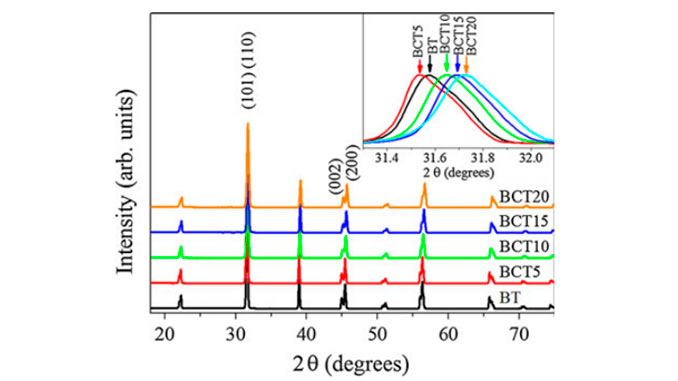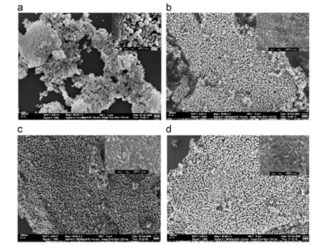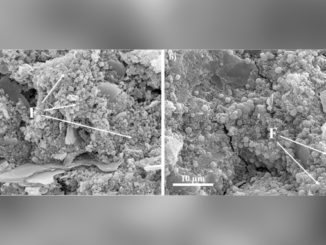
Writers: V. D. Araújo, Fabiana V. Motta, Ana. P. A. Marques, Carlos A. Paskocimas, Maurício R. D. Bomio, Elson. Longo, José. A. Varela
Keywords: Ferroelectric materials; polymerization method; X-ray; Raman spectroscopy
Abstract: Ferroelectric materials, such as barium titanate (BaTiO3), have been extensively studied for application in electronic and optical devices. The substitution of Ba by Ca is an effective method to improve the piezoelectricity temperature stability, as it can greatly lower the tetragonal–orthorhombic phase transition temperature, whereas the change of the Curie point is negligible. Ba(1−x)CaxTiO3 (x = 0, 0.05, 0.10, 0.15, and 0.20) powders were prepared by complex polymerization method. The effect of calcium on the tetragonality of the BaTiO3 system was monitored using basic characterization techniques: X-ray diffraction, differential scanning calorimetry, and Raman spectroscopy. The results indicate that increased calcium contents raise the Curie temperature (Tc) and that the addition of calcium in the BT matrix reduces tetragonality.




